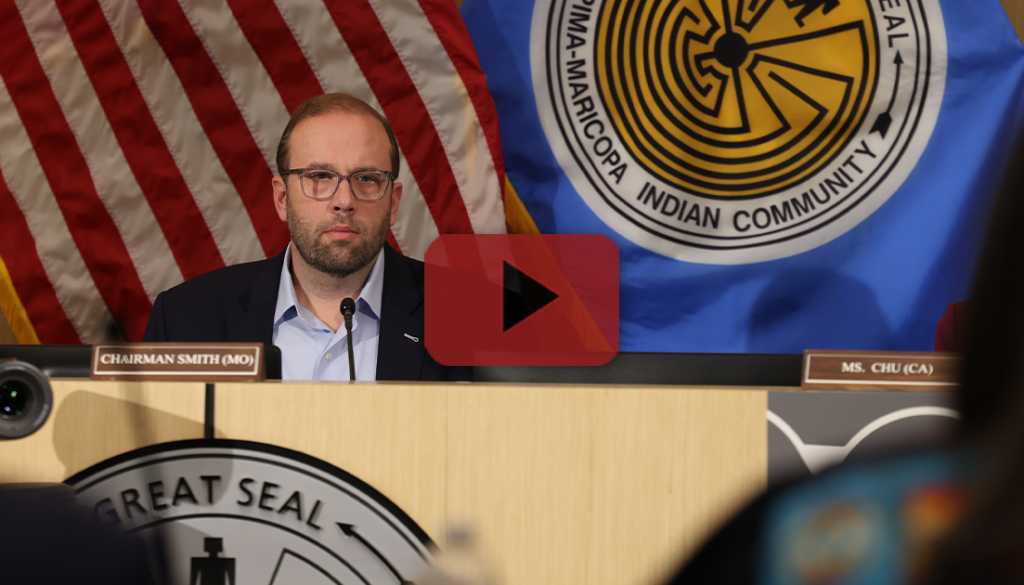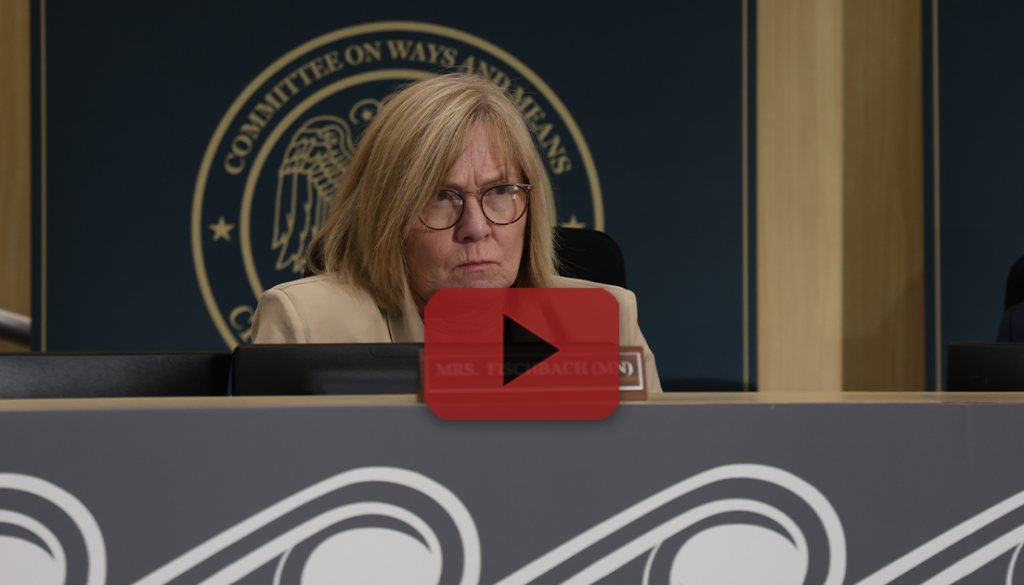Four Key Moments from Hearing on Empowering Native American and Rural Communities in Scottsdale, Arizona
SALT RIVER PIMA-MARICOPA INDIAN COMMUNITY, ARIZONA – On Friday, inside the council chambers of the Salt River Pima-Maricopa Indian Community, the Ways and Means Committee heard testimony about the concerns of Native American communities and reaffirmed a commitment to help Tribal and rural communities prosper. The hearing marked the first time the Committee has held a hearing on Tribal lands in its 235-year history.
The hearing focused on the challenges faced by Tribal communities when caring for abused and neglected children in the child welfare system. Several witnesses provided firsthand accounts of their experiences working with at-risk children and families, as well as navigating the intricacies of the provisions of the Indian Child Welfare Act. Witnesses detailed how taking care of foster children or adopting Native American children is made more difficult under existing policies. The hearing also directed attention to addressing the shortage of doctors and other medical personnel in both Tribal and rural communities and how Congress can better leverage the tax code to support critical medical research and development. As Ways and Means Committee Chairman Jason Smith (MO-08) noted in his opening statement, this lack of access to health care contributes to a higher mortality rate in both communities.
“Parity” is Key for Strengthening Services to Families
Title IV-B is a flexible child welfare program that many Tribes rely on to support foster families and kinship caregivers, prevent maltreatment, and to fund innovative programs that meet the unique needs of Native American families. Title IV-B expired in 2021 and the Committee is looking at ways to modernize the program through reauthorization. Witnesses discussed how Tribes have trouble accessing federal funding and burdensome administrative reporting requirements that make it challenging to operate their programs and help families thrive. Native American child welfare leaders testified to Chairman Jason Smith (MO-08) that Tribes are seeking the same kind of access to Title IV-B as states so they can strengthen their supports to Native American children and families and preserve their culture.
Chairman Smith: “Ms. Carlos, Ms. Manuel – child welfare is very important to this committee, and we have the sole jurisdiction for the Title IV-B Child Welfare Program, which is currently due for reauthorization. Given your knowledge and expertise, I wanted to ask you both what Congress should do to ensure that reauthorizing is supportive of tribal child welfare programs and the relationship between tribes and states when it comes to addressing issues of child abuse or neglect.”
Council Member Mikah Carlos, Salt River Pima–Maricopa Indian Community: “[Title]IV-B is complicated, and tribal access, as we’ve heard so much, there’s no parity to the states. Our access is often overburdened with a bureaucratic process. To make these things equitable to tribes, there has to be an increase of funding, but you also have to make the process easier and accessible to tribes. We see that…prevention is intensive. The funds are insufficient to make sure that we can prevent families from even entering into the child welfare system. When we ask Congress: what can you do? You can increase the funding that is available to tribes, you can increase the ease of access and make sure that there’s parity from the tribes; that tribes have access to the same tools that the states would as well.”
Cultural Connection Critical for Native American Adoptions
Native American children in the child welfare system encounter significant obstacles in maintaining connections to their cultural heritage. The preservation of Native American culture while improving collaboration with state agencies was a top priority for witnesses. Rep. David Schweikert (AZ-01), the hearing’s host and adoption policy champion, asked one of his constituents, a Tribal leader for the Salt River Pima-Maricopa Indian Community, what efforts Tribes make to preserve their culture even among Native children adopted by non-Native families.
Rep. Schweikert: “Are there ways we can make sure that the relationship to a child’s native culture is there? Is that a possibility?”
Council Member Mikah Carlos, Salt River Pima-Maricopa Indian Community: “We do have non-Native families that take our children, and one thing that we provide is a robust opportunity to come back to the community. If they are still in the state, they can bring their children back and stay connected to the community, to the gardens, to the lands. We offer multiple services. Before a child is even placed, we make sure that they have an understanding of the importance of the culture; trying to emphasize that the himdag [O’odham term roughly meaning “way of life”], which is hard to explain, because it encompasses so much about their connection to the community, but also their role in the world. We try to give them an understanding of that and it’s hard to translate that when you can’t even translate it into English, but we do our best to make sure that they understand that at bare minimum, this is who they are…We do those services here and we want to make sure that we emphasize it.”
“Increasing the Burden”: How Government Policies Affect Native Families
A major theme discussed in the hearing was how federal policies are a roadblock to Tribes providing resources and services to needy children and families. One notable example is a recent policy change at the IRS limiting tribal and contractor access to vital tools for collecting past-due child support from tax refunds on behalf of custodial parents. Rep. Claudia Tenney (NY-24) highlighted how the result is Native American parents facing a heavier burden trying to provide for their children without the financial support from the non-custodial parent.
Rep. Tenney: “The Ways and Means Committee did a hearing on the Child Support Enforcement program and how a pending IRS rule would prohibit the states from using private contractors from accessing the federal tax refund program…What significant outcomes, if any, do you anticipate would happen to Native communities, particularly yours, if you were not able to access everything that you could to come up with the back child support due?”
Council Member Mikah Carlos, Salt River Pima–Maricopa Indian Community: “I do know that in instances where tribes lose access, or they’re not able to basically collect on the past-due child support that helps support their families, we see that they have to make up those funds in other ways. We see that they continue to struggle to make sure their basic needs are met. So when we lose access to those tools, it creates a bigger burden on the families that are already burdened. So if they already have a one-parent household or they’re already doing kinship placement, or there are other factors that are in play, you’re increasing the burden that is put on those families that are already taking those children and making sure that they’re trying to make their basic needs met.”
Shared Struggle: Too Little Health Care
Though the experience of Native American communities and rural communities are not the same, one shared challenge is a lack of access to health care, whether it be primary care physicians, specialists, or nurses. The Ways and Means Committee has been focused on addressing this challenge, and this hearing came two days after the Committee passed legislation that begins to address these shortages, including guaranteeing more residency slots for truly rural hospitals. As a witness noted in response to Rep. Michelle Fischbach (MN-07), more residency programs in rural communities leads to more doctors practicing in those same communities in the future.
Rep. Fischbach: “Dr. Kupferman, you mentioned in your testimony that you guys added 229 residency positions. Could you maybe talk a little bit about how can the GME program be improved to benefit the rural health care workforce and why is it so important, not only to those rural areas, but to the health care system in general, and how it really does improve it.”
Dr. Michael Kupferman: “Certainly challenges in rural health care are not germane specifically to physicians, but all health care providers: nurses, medical assistants, people who help run our hospitals. In particular, being able to provide coverage in an emergency room, obstetrics and gynecological services in our rural hospitals, and EMS services in our hospitals continues to bedevil us in areas where we have our own rural hospitals. So, expanding not just the number of trainees that we are bringing into these locations but also continuing to invest in some of those incentives that will allow individuals to make that decision that they would like to live in those rural locations once they finish their training. That’s the pipeline that we are building, and we continue to invest in it.”




